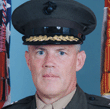Executive Leadership Conference highlights

Government and industry officials met in Hershey, Pa., to discuss federal IT policy and other pressing issues at the annual Executive Leadership Conference, sponsored by the Industry Advisory Council. Here are highlights from the Oct. 19-21 event.
Government and industry officials met in Hershey, Pa., to discuss federal IT policy and other pressing issues at the annual Executive Leadership Conference, sponsored by the Industry Advisory Council. Here are highlights from the Oct. 19-21 event.In a change of policy, the Joint Chiefs of Staff will apply the IT management practices of the Clinger-Cohen Act to warfighting systems. Lt. Gen. Robert Shea, director of command, control, communications and computer systems for the Joint Staff, said the services need more management discipline and a focus on developing capabilities instead of applications for weapons systems. He said the Joint Staff and Defense Department chieftains are working on a policy directive for release by the end of the month that will require warfighting systems to incorporate Clinger-Cohen practices. The law, which established management and acquisition reforms for federal information technology, excludes warfighting systems. "We are referring to the CIO approach in Clinger-Cohen that gives the CIO a tremendous amount of authority," Shea said. "In the past, we haven't stopped to think about the capabilities and the data. We were thinking too much of buying things instead of end-to-end capabilities." With all the expected benefits of agency enterprise architectures, federal IT officials are wondering how, if at all, to incorporate emerging technologies into their infrastructures. [IMGCAP(2)]"There is not a lot of room for new technologies in our agencies, because the business-case process does not support it," said Ed Meagher, acting CIO at the Veterans Affairs Department. "The return on investment must support it. We had some programs that had to be axed or cut back because we can't support research and development." Meagher, one of several government and industry officials who discussed architecture efforts, said almost every agency is faced with this problem. Veterans Affairs is trying to deal with the issue by using performance-based contracts, Meagher said. For instance, VA recently modified its telecommunications contract with Sprint Corp. to ask for specific results and let the vendor figure out how to deliver them. By setting performance requirements, agencies can ensure that vendors offer the latest technologies, he said. [IMGCAP(3)]The Federation of Government Information Processing Councils is now the American Council for Technology. The council said the new name reflects changes in both federal IT and the group.In a new plan, the council detailed its strategy for the next three years and said its mission is "to lead the IT community to improve government." The change in focus is intended to increase the council's government employee membership, president Barry West said in a statement announcing the changes. West, CIO of the National Weather Service, said the changes would take effect in January. The Army wants its soldiers to be able to order uniforms as easily as shoppers buy clothes online from the Land's End store. "We need to focus on Web-based systems for placing requisition orders and tracking the fulfillment process, transportation and delivery in the theater," said Gen. Paul Kern, commander of the Army Materiel Command. "Requisitions need to be visible to everybody in the system." Industry will play a crucial role in helping the command integrate its logistics function into the Defense Department's Global Information Grid, a departmentwide network backbone, he said.[IMGCAP(4)]The Defense Department and NASA support creating a single small-business contracting goal for use government-wide. A single goal would give agencies credit for their subcontracting with small businesses.Defense and NASA support the plan drafted by procurement officials to do away with the individual targets that agencies negotiate with the Office of Management and Budget, said Scott Denniston, director of Veterans Affairs' Office of Small and Disadvantaged Business Utilization. Legislation also is being drafted that would give the Defense Department one goal for small-business contracting, said Mark Clark, deputy chief of acquisition plans and policy at the National Security Agency.Other agencies have voiced approval as well, Denniston said. He cited the Department of Veterans Affairs, which doesn't have the contracting staff to completely track its progress on the multiple small-business goals negotiated by VA bureaus.




Joint chiefs to use Clinger-Cohen
Agencies seek emerging tech
FGIPC adopts new name
Army: Be like Land's End
NASA, DoD tout small biz goals

Lt. Gen. Robert Shea

Edward Meagher

Barry West

Scott Denniston
Joint chiefs to use Clinger-Cohen
Agencies seek emerging tech
FGIPC adopts new name
Army: Be like Land's End
NASA, DoD tout small biz goals
NEXT STORY: Contract roundup